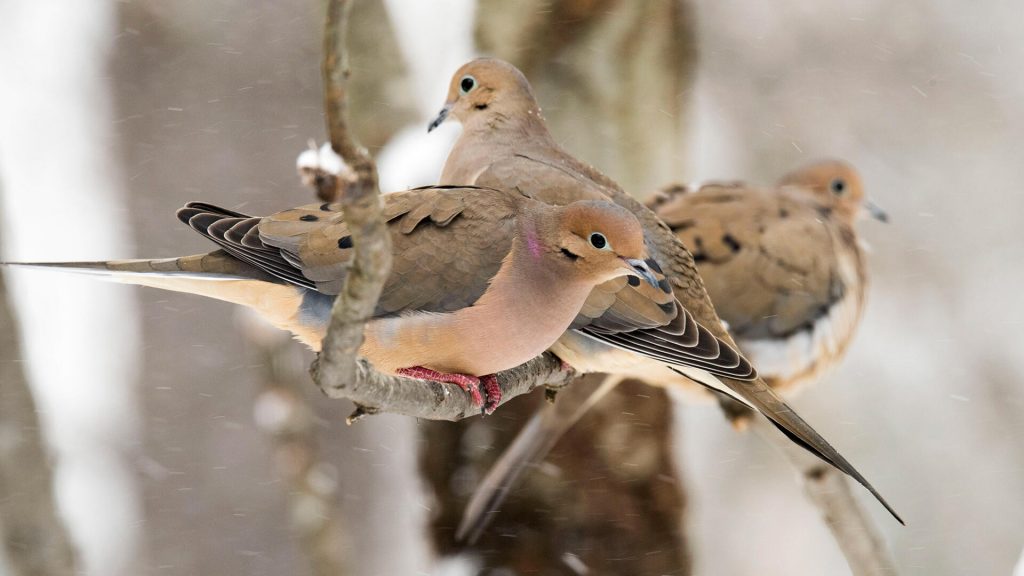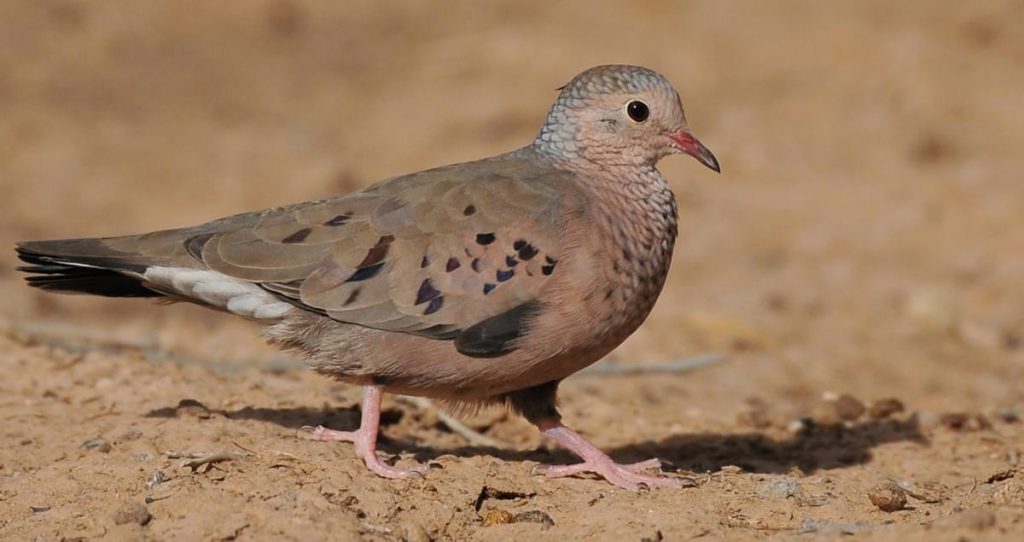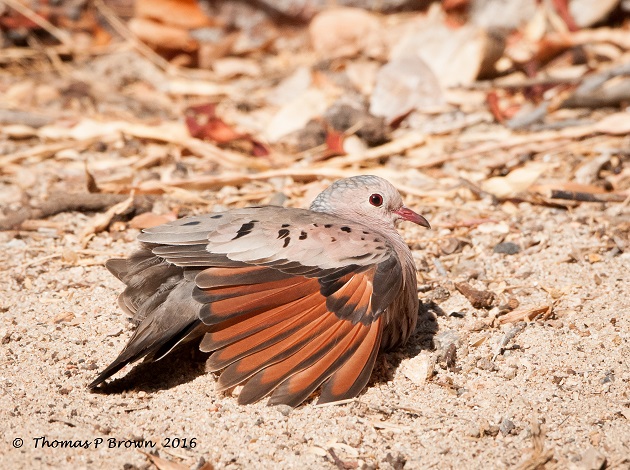Doug Becker, October 22, 2020
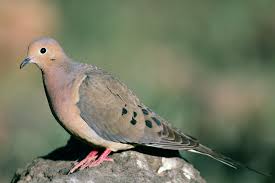
Mourning Doves! They’re all over everywhere! From coast to coast and from southern Canada through Mexico. They’re a graceful, robin-sized bird with a long, narrow tail, small head, and are one of the most common birds throughout the United States. Though they’re not a bright red or blue in color, Mourning Doves have a beauty of their own. Their top half is a soft grayish-tan with distinctive large, black spots on the wing. This is met with a very pale peach-colored breast and pinkish legs and feet.
The Mourning Dove is named for their soft, lingering calls that sound like mournful laments. This should not be confused with the morning time of day. When the Mourning Doves take flight, their wings will make an easily heard whistling sound, and their flight is fast and as straight as an arrow. These doves make home in both town and country, open fields and backyards. If you’re having trouble getting birds to your feeder, put most any seed on the ground around your feeder and the Mourning Doves will not present a challenge. Just keep the cat in the house!
Mourning Doves
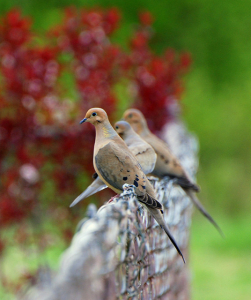
Mourning Doves can be seen almost anywhere except in deep forests. They will flock in groups and perch on telephone lines or low branches. Because they are seed eaters, look for them in fields with open ground, parks, and, of course, backyard feeders. 99% of their diet consists of seeds so they spend most of their time foraging on the ground and out in the open. These doves eat 12-20 percent of their body weight which averages 71 calories each day.
At our home in Florida, we had Morning Doves on the ground under the feeder all day long. They would also perch in groups on lower limbs of the oak trees near the feeder. Their mournful cooing was always heard, and we enjoyed the closeness to these birds. So did the Coopers Hawk who made his presence known throughout the day. We started calling the oak tree our “hawk feeder.” Still, the number of doves in the backyard never seemed to decline.
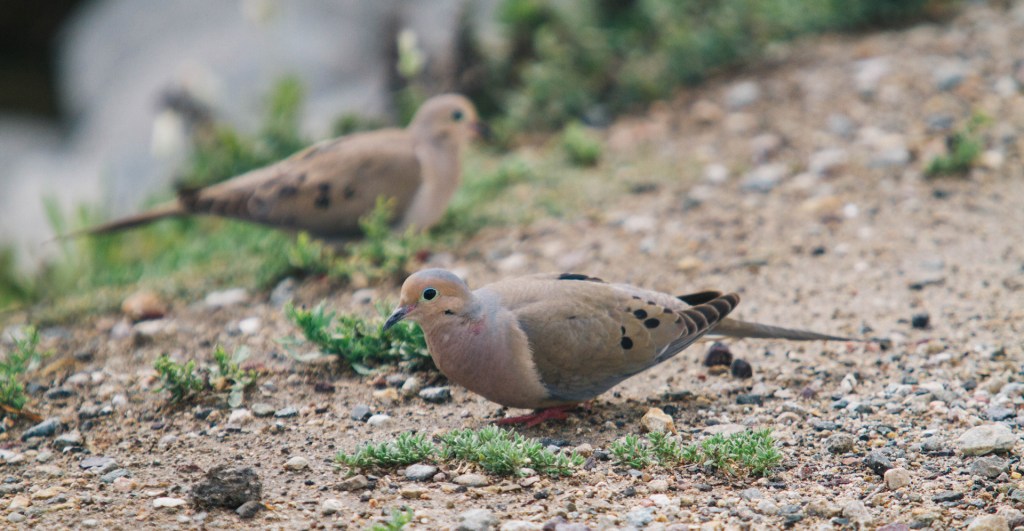
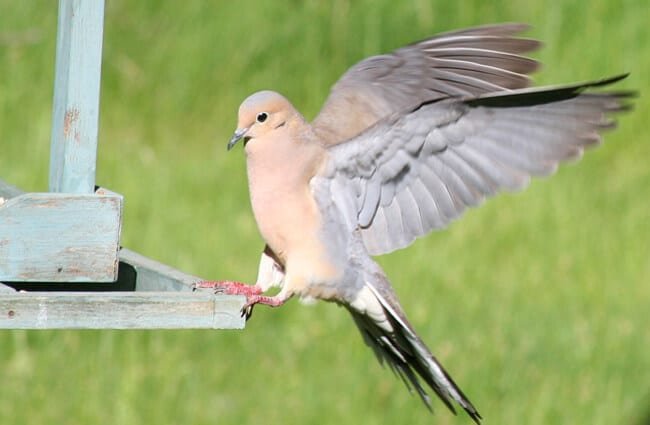
Mourning Doves and people seem to coexist quite well. Even though tree branches, bushes, and even the ground make good nesting places, you can also find them in house gutters, behind a porch light, on a window sill, or anywhere. It’s not uncommon to be looking face to face with a Mourning Dove nesting in an odd corner of your back porch. Their nest is simple and no architectural wonder like many other birds make. Just some pine needles, twigs and grass stems make a home with little insulation for the young. Construction is also simple, if not a little odd. The male brings each twig to the female. Then, she weaves it into the nest while he stands on her back….I don’t think my wife would go for that!
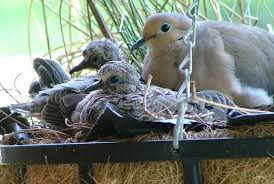
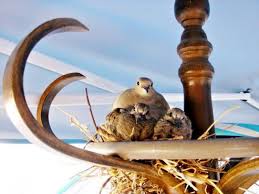
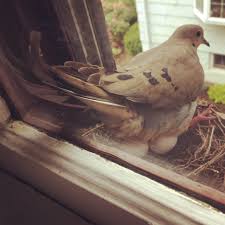
Mourning Doves have long been a favored game bird. In fact, they’re the most frequently hunted species in North America. Hunters harvest over 20 million of these widespread and abundant birds each year, yet, their U.S. breeding population is estimated at well over 350 million. I would estimate that it would take lots of doves to make a big meal.
Doves of the U.S.
Mourning Doves are not the only doves in the U.S. but they certainly are the most plentiful. Today, there are six other species of doves to be included. The Rock Pigeon or Rock Dove, otherwise known as the common pigeon, covers the same large range as the Mourning Dove, but clearly prefers town and city living. These birds are usually gray with black wing-bars, but can also be found in a variety of different shades and markings. Rock Pigeons are much larger than Mourning Doves, and “squab” is considered a pigeon delicacy at the dinner table. Bon Appetit!
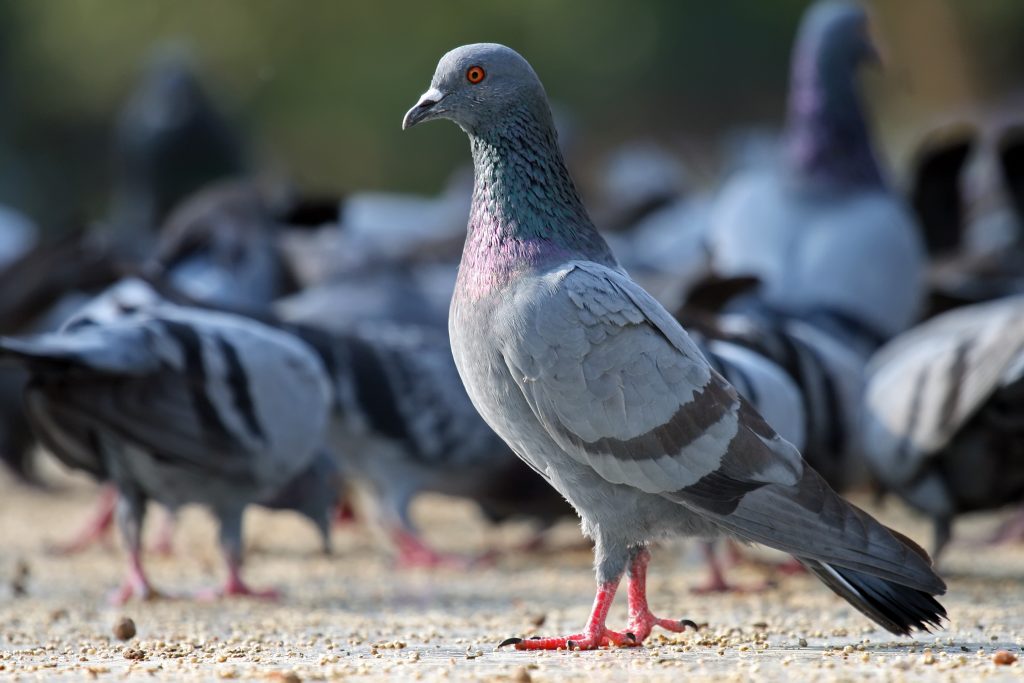
Band-tailed Pigeons are large gray pigeon that resemble the Rock Pigeon. These birds, however, have a restricted range in only mountain forests in the Southwest and up the California coast into Canada. They fly in flocks, and if you get close enough, you will see a white band at the tip of their long tail, and a white crescent at the back of their neck.
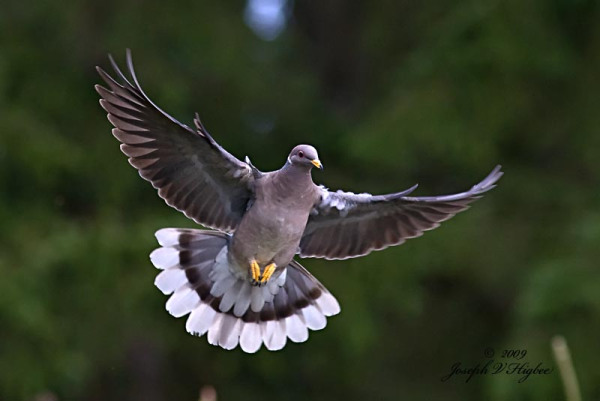
The Eurasian Collared Dove was brought to the Bahamas in the 1970s and quickly made home in the U.S. Today they occupy most of the states except in the Northeast. These handsome doves more closely resemble the Mourning Dove. The Eurasian Collared Dove is bigger, but has the same overall coloring as the Mourning Dove plus white patches in the tail, black wingtips, and a black collar at the nape of the neck. When birding, look closely to make the right identification. Their range is still growing.
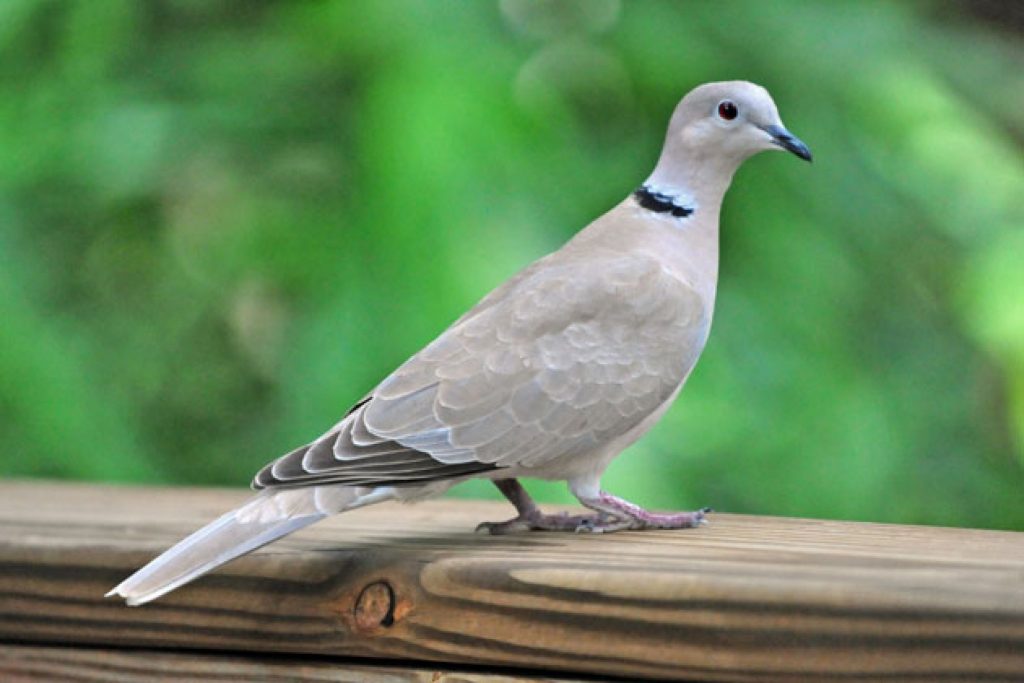
The White-winged Dove’s range is limited to the Southwest, Gulf shores, and all of Mexico. When perched, they are a nondescript tan. In flight, however, the white outline on their wing lights up against darker wing feathers. White-winged Doves have become common in towns and cities, so getting close for positive identification is easy. You may want to take note of their colorful face with bright orange eyes surrounded by blue “eye shadow.”
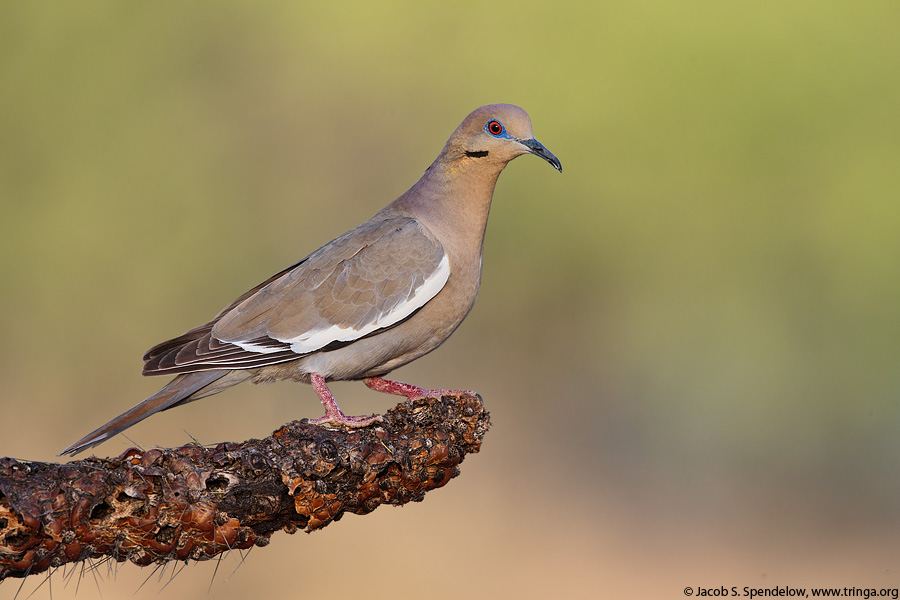
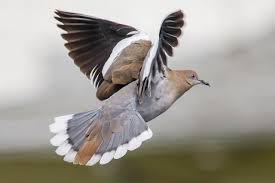
The Inca Dove is found only in the Southwest and throughout Mexico though like other doves, their range is rapidly expanding. The Inca Dove is small and covered with tan scaly looking feathers that blends right in with their suburban desert habitat. This is another dove that prefers towns and cities and can easily be seen amid the hustle bustle of us humans. For birders looking for the unique Inca Dove, don’t be discouraged by the sound of “no hope.” That’s the song of the Inca Dove!
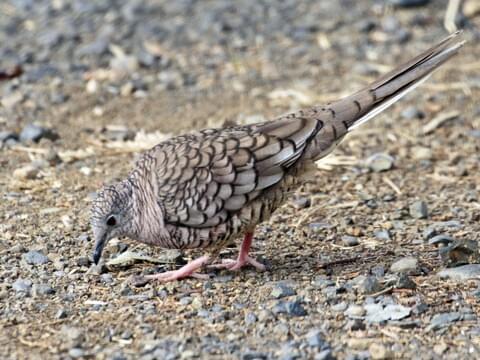
Then, let’s not forget the little Ground Dove. The Ground Dove is not much bigger than a sparrow, and are common across the far south from California to Florida. These cute little guys look much like the Mourning Dove, but smaller and have a shorter tail. For birders, finding them can be a challenge because they spend much of their time foraging on the ground where their grayish-brown color is perfect camouflage. Ground Doves busily forage in small groups, then suddenly flush into lower tree branches when predators approach. Living in Florida, we enjoy these small doves right outside the window. Nice!
These doves all share their looks and behaviors. They are all strong and hardy and plentiful in their range, and are all happy at or below the backyard feeders. My choice is the Mourning Dove. They’re out there! They’re everywhere! And, they’re at my feeder!
